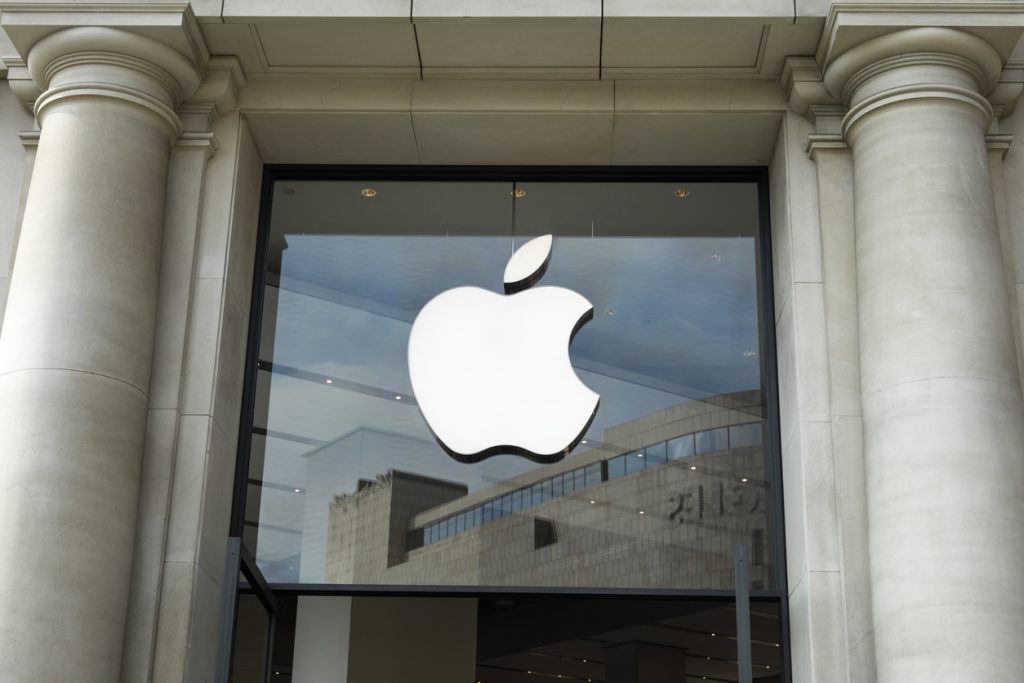
Date Issued – 6th September 2024
Futures Edge Lower as Crucial NFP Report Looms, Broadcom Outlook Disappoints: What’s Moving Markets
As the markets brace for the release of key economic data, U.S. stock futures are inching lower, reflecting growing uncertainty around the Federal Reserve’s monetary policy and Broadcom’s disappointing revenue forecast. Investors are keeping a close eye on labor market signals, which could determine the direction of interest rates and the broader economic outlook.
1. U.S. Stock Futures Slip as Labor Market Data Nears
Wall Street futures traded just below the flatline on Friday as anticipation builds ahead of the nonfarm payrolls (NFP) report. Investors are weighing the potential impact this report may have on the Federal Reserve’s next policy decision regarding interest rates. As of 03:45 ET (07:45 GMT), Dow futures dropped by 165 points (0.4%), S&P 500 futures fell by 38 points (0.7%), and Nasdaq 100 futures were down by 210 points (1.1%). Thursday’s session saw mixed results, with the Dow Jones and S&P 500 closing in the red, while the Nasdaq Composite edged higher. Sentiment was volatile following mixed data on U.S. private sector job growth and a decline in jobless claims. September is typically a weaker month for stocks, and with the S&P 500 already down more than 2.5%, traders remain cautious ahead of critical economic signals.
2. Key Nonfarm Payrolls Report in Focus
The August nonfarm payrolls report, set to be released later today, is expected to significantly influence the Fed’s decision on a potential rate cut. Economists predict an increase of 164,000 jobs, up from July’s disappointing 114,000 figure. Last month’s lower-than-expected number sparked concerns about a potential recession. With the Fed’s two-day meeting approaching on September 17-18, markets are pricing in a 59% chance of a 25 basis point rate cut. However, a weaker payrolls report could push the central bank towards a deeper 50 basis point reduction to offset mounting economic concerns.
3. Broadcom Sales Forecast Falls Short, AI Enthusiasm Cools
Broadcom’s (NASDAQ: AVGO) sales guidance for the current quarter fell short of expectations, leading to a dip in its stock during extended trading. The chipmaker projects Q4 revenue of $14 billion, slightly below analysts’ forecasts of $14.04 billion. Despite strong demand for its AI-optimized chips, Broadcom reported a 49% drop in revenue from its broadband unit. This tempered investor enthusiasm, echoing similar concerns around Nvidia’s (NASDAQ: NVDA) recent earnings, which also missed sky-high expectations. Broadcom’s revised AI revenue forecast of $12 billion for the fiscal year still reflects robust growth but raises questions about the sustainability of the AI boom that has driven much of the semiconductor industry’s recent rally.
4. Seven & i Rejects Couche-Tard’s $38.5B Takeover Bid
The board of 7-Eleven owner Seven & i Holdings (TYO: 3382) rejected a $38.5 billion cash offer from Canada’s Alimentation Couche-Tard (TSX: ATD), citing concerns over shareholder value and regulatory hurdles. The proposed $14.86 per share deal would have been the largest foreign acquisition of a Japanese firm. Seven & i argued the timing of the offer was opportunistic and raised concerns about antitrust challenges in the U.S., where the combined company would dominate the convenience store market. While open to considering future proposals, Seven & i stressed the need to protect shareholder interests and regulatory compliance.
Citi and Bank of America Predict Oil Prices Could Drop to $60 by 2025
Citi Research: Surplus to Push Oil Down to $60
Citi strategists foresee a significant market surplus developing in the next two years, which could drive oil prices down to around $60 per barrel by 2025. While supply disruptions in Libya and OPEC+ decisions have temporarily supported Brent prices in the $70-$72 range, Citi considers these effects short-lived. At present, oil markets have not significantly reacted to OPEC+’s recent decision to delay its production cut unwind from October to December 2024. Despite ongoing disruptions in Libyan oil supplies, Citi remains bearish on the medium-term outlook, anticipating that the surplus will push prices lower as early as next year. Their strategy? “Sell on a bounce toward ~$80 Brent,” they advise, noting that the market is likely to see a downward shift towards the $60 range as a sizeable surplus emerges.
Bank of America: Brent Forecast Revised Down
Similarly, Bank of America’s Commodities Research team has revised down its Brent oil price forecast, lowering it to $75 per barrel for the second half of 2024, down from nearly $90. The forecast for 2025 has also been reduced to $70 from $80. The team points to rising global oil inventories and weaker demand growth, alongside OPEC+ spare capacity at a record 5 million barrels per day, as reasons for the downgrade. They predict that Brent prices will likely move from the upper end of their medium-term range ($60-$80 per barrel) toward the middle of that spectrum. This outlook also reduces the risk of price spikes caused by geopolitical events, as the large surplus in capacity provides a buffer against potential disruptions.
OPEC+ Delays Production Cut Unwind
The decision by OPEC+ to delay the unwinding of production cuts until December 2024, with the process extending through 2025, has been a key factor in the oil market’s recent movements. Despite this, Citi and Bank of America expect the market surplus and softening demand particularly in the U.S. and China will continue to weigh on prices, leading to a gradual decline in oil prices over the next two years.
UK Antitrust Regulator Accuses Google of Abusing Power in Digital Advertising
Google’s Alleged Anti-Competitive Practices
According to the CMA, Google has been using anti-competitive tactics in the open display ad tech market, favoring its own ad exchange, AdX, in a way that disadvantages rivals. This move, the regulator argues, could be harming publishers and advertisers across the UK by limiting their ability to compete fairly. Juliette Enser, the CMA’s interim executive director of enforcement, said, “We’ve provisionally found that Google is using its market power to hinder competition when it comes to the ads people see on websites.” She highlighted that many businesses rely on online ads to fund free or cheaper digital content, which helps reach millions of people across the UK.
Google’s Response
Google disagrees with the CMA’s assessment. Dan Taylor, Google’s VP of Global Ads, responded, “Our advertising technology tools help websites and apps fund their content, and enable businesses of all sizes to effectively reach new customers.” He added that Google remains committed to providing value for its publisher and advertiser partners, calling the CMA’s interpretation of the ad tech sector flawed.
Broader Investigations
The CMA’s probe adds to a growing list of investigations into Google’s advertising practices. The U.S. Department of Justice and the European Commission are also examining Google’s role in the ad tech market. In June 2023, EU regulators suggested that Google may need to divest parts of its ad tech business to resolve competition concerns. However, Google has maintained that such a measure would be disproportionate.
Potential Abuse Since 2015
The CMA claims that since at least 2015, Google has been abusing its dominance on both the buying and selling sides of the digital advertising supply chain to favor its own services in auction matches. The regulator is now awaiting Google’s representations before deciding on any potential actions. This case marks a critical moment for regulators seeking to curb the influence of tech giants in digital markets, as concerns about monopolistic practices continue to grow globally.

Apple Approves WeChat for iPhone 16 Amid Ongoing Negotiations with Tencent
Apple (NASDAQ) has reportedly granted approval for an updated version of Tencent’s WeChat app to be compatible with the upcoming iPhone 16, as both companies continue discussions over modifications to the app. This development provides more time to resolve tensions between Apple and Tencent regarding app store fees and in-app transactions.
WeChat’s New Features and Apple’s Approval
According to Bloomberg, Apple recently approved an update to WeChat’s iOS version, which introduces enhanced features like upgraded WeChat Moments, resembling Instagram, and expanded live-streaming capabilities. The approval has also helped calm rumors that WeChat could be barred from iPhone 16 devices amid a potential conflict between Apple and Tencent.
The Core Dispute: In-App Transactions
At the center of the dispute is Apple’s demand for a share of transactions occurring within WeChat’s mini-games platform, where independent developers host casual games. Apple insists that Tencent block external payment services within these games to ensure the typical 30% transaction fee remains in place. Additionally, Apple has called for disabling in-game messaging, a request Tencent has rejected as too extreme. While Tencent has resisted these demands, negotiations are ongoing to find a compromise. Tencent is reportedly working on a revenue-sharing deal with Apple, allowing payments within mini-games to be processed through Apple’s system. During a recent earnings call, analysts confirmed that both sides are attempting to find middle ground.
Implications for Apple’s China Strategy
Apple’s efforts to maintain control over its app ecosystem, ensuring global quality and security, are being tested in China, where WeChat is used by over 1.4 billion people for everyday activities like payments and entertainment. While many of these transactions bypass Apple’s fees, mini-games and in-app purchases remain a sticking point, with developers bypassing Apple’s system to avoid the 30% charge. Apple is pushing Tencent to stop this practice, known as “steering.”
The iPhone maker has been more aggressive in China this year, issuing similar warnings to other companies like TikTok-owner ByteDance regarding in-app spending. However, this tougher approach risks alienating developers in a crucial market. The ongoing negotiations between Apple and Tencent may set a precedent for how the company navigates relationships with key players in China’s digital economy.
Airbus Reports Lower Deliveries in August but Secures Significant Private Order
Airbus, the European aerospace giant, announced a decrease in aircraft deliveries for August, following a surge in the previous month. The planemaker delivered 47 aircraft in August, down from 77 in July, bringing the total for the year to 447. Despite the slowdown, Airbus remains focused on achieving its annual target of 770 deliveries, though it had to revise this number downward over the summer due to ongoing supply chain issues affecting the availability of engines, cabin equipment, and other critical parts. Industry analysts, including Chloe Lemarie from Jefferies, noted that August is typically a slower month for Airbus in terms of deliveries. To hit its year-end goal, the company will need to increase its monthly delivery rate by 7% compared to last year’s pace. Airbus’ supply chain, described as “fragile” by insiders, remains a concern as the company pushes to meet demand.
Major Orders, Including from a Private Customer
While deliveries slowed, Airbus booked 46 new aircraft orders in August. This includes a significant, previously announced order of 30 A330neos from Cathay Pacific. Notably, the planemaker also secured a rare order from a “private customer” for three A350-900s and three A320neos—a deal valued at over $1 billion at catalogue prices, often applied to one-off purchases. Though Airbus declined to comment further on this private customer, the designation typically refers to luxury VIP jets or aircraft purchased by governments. Strong demand for such jets continues in the Middle East, where luxury air travel and government purchases are prevalent. Unlike commercial airlines that tend to use the “Undisclosed” label when concealing their identities for strategic reasons, these private transactions are noted separately in Airbus’ monthly reports.
Airbus’ Order Backlog
As of now, Airbus has received 432 gross orders for the year, with a net total of 413 after cancellations. Despite the slowdown in deliveries, Airbus’ strong order pipeline indicates continued robust demand for its aircraft, particularly in both the commercial and private sectors.
Find below some of our Buy/Sell Recommendations. Balfour Capital Group is a distinguished global boutique investment management firm with $400 million AUM and over 1000 Clients.

Disclaimer: This post provides financial insights for informational purposes only. It does not constitute financial advice or recommendations for investment decisions.

